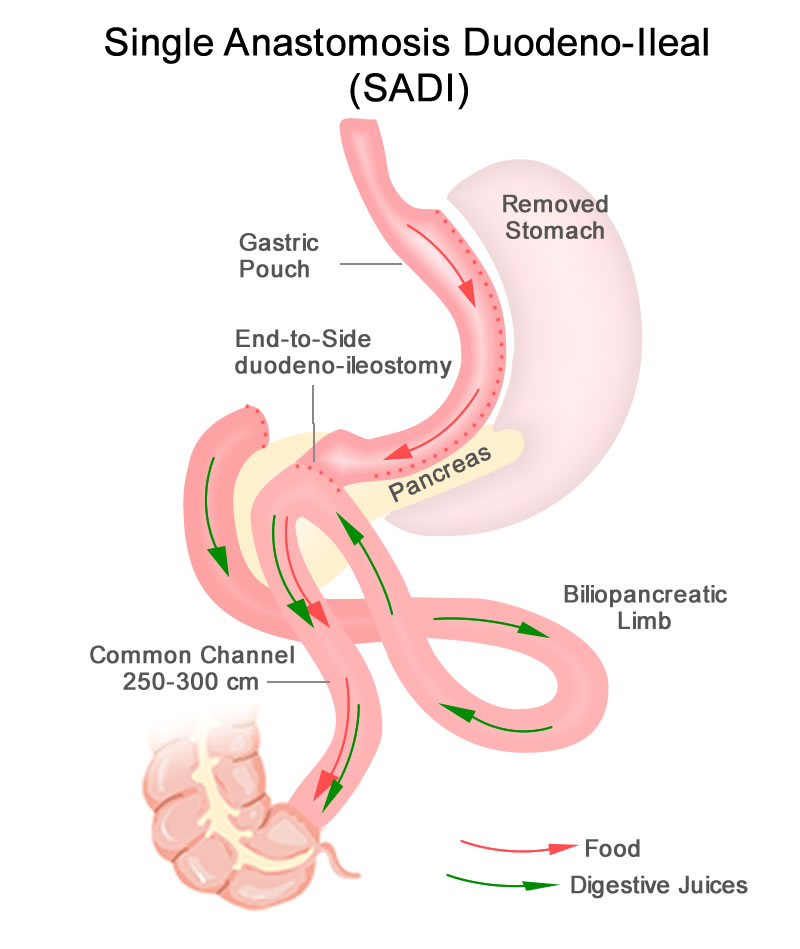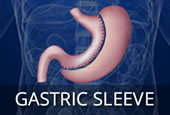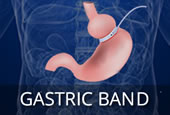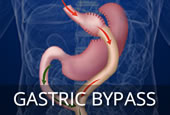SADI-S
Single Anastomosis Duodenal-Ileal Bypass with Sleeve Gastrectomy (SADI-S)
The Single Anastomosis Duodenal-Ileal Bypass with Sleeve Gastrectomy (SADI-S) is also known as a One Anastomosis Duodenal Switch (OADS). This is a recent (2007) procedure that modifies and combines both “Bileopancreatic Diversion (BPD) (an old established operation 1979)” with a “Duodenal Switch (DS) (established in 1986).
SADI-S (2007) essentially simplifies the “two” anastomosis (performed in BPD and DS) into “one”. This join is in a form of a “loop”. This procedure joins the duodenum (just passed the stomach) to the loop of ileum, which is about 200cm from the origins of the large bowel. This creates a significant malabsorption.
Advantages of SADI-S
-
One anastomosis (join)
-
Preserved pylorus and therefore less gut function disturbance (theoractical)
-
Good weight loss maintained
-
Laparoscopically performed
-
A good option for revision of other operation types
Disadvantages of SADI-S
-
Probable higher risk compared to gastric bypass- bleeding, nausea, anastomotic leaks
-
Malabsorption of fat soluble vitamins, micronutrients, iron, calcium and protein
-
Frequent bowel movements, flatulance and fatty stools
-
Dumping syndrome
-
Mandatory requirement for multivitamin supplementation and testing for metabolic deficiencies
-
Lacking robust data (follow up and long term data).
Position statement by IFSO 2018
-
Currently considered as an “Investigational” procedure and NOT a recognised “Main-stream” procedure.
-
The procedure is considered “safe” and “efficacious” in the current form (SADI-S0.
-
Current concerns of insufficient long term data on nutritional issues.
-
Insufficient prospective or comparative data compared to the standard Bileopancreatic diversion or Duodenal Switch






